It is interesting now as I prepare for my assessment to look back with the benefit of time on the earlier assignment and to see how different I feel now to how I felt then in terms of the assignment itself but also in terms of the images and my approach. A lot has changed in my work which is more obvious when I compare this assignment to a later one such as assignment 5. I remember back to assignment 1 and feeling very unsure as to how to assemble a set and I constantly fought with the urge to pick what I would consider to be my best image even if it looked out of place in the set. Now I can see better the flow that must exist within a series and how the images must have a continuity. I can also see much clearer when I am shooting and what looks right in an image and what doesn’t. I guess one thing that has changed is that 2 years ago if I took an image that didn’t look right I would spend time trying to figure out why instead of moving round my subject looking for one that did look right.
I feel now with the benefit of time that I need first of all to show full set of contact sheets that I took for this assignment and perhaps explain the context as to why I was trying some of the techniques at the time. I will upload the contact sheets to dropbox and add link to my assessment submission. Looking back now I can see I didn’t have a clear idea of what I was trying to portray. For intense I shot an entire sequence of shots of my father while he was in hospital that could have served as this assignment but I think I felt this was too easy.
For instance here is one possible alternative: Option 1: Discharge day.
The context is my Dad’s hospitalisation following his stroke, he is an active man and has an aversion to doctors and hates being cooped up.

Labeled.

Hospital meant sitting around, filling time.

He lives alone in Wexford so the family stay in touch by phone, friends and family call to see how he is.

There’s not much to do but Dad likes the crossword so we do it together, it helps with his ever improving language skills.

There are a lot of new things to think about including new medication.

Today though is discharge day and we wait for discharge.

We get forms signed, prescriptions filled and appointments made.

We head to the pharmacy to collect his new pills.
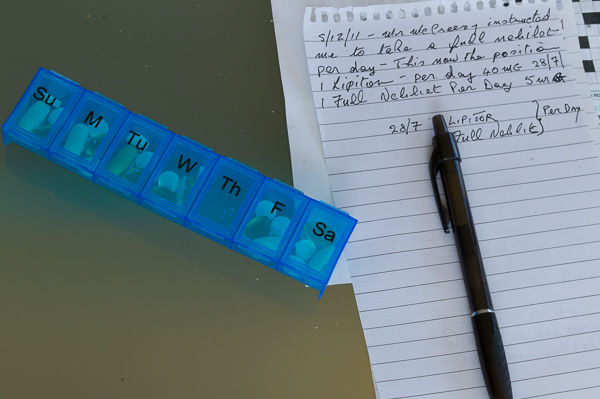
After his stroke memory is a challenge and Dad has to make notes to remember his instructions and also keep his pills in a dispenser so he can remember to take them.

But on the whole things are not too bad, its good be out of hospital and independent again.

And while he might have to cut down he can still enjoy a drop of his favourite poison.

Life goes on! The end.
I realise now that I actually have two different narratives here in the set of images that I took at the time. One is as above and focusses on his illness and the aspects of his life that are affected and the other need not make any mention of it at all.
Option 2: My Dad: A day in the life.
Context.
My dad is 70. He is active and fit, fiercely independent and he lives alone in county Wexford, a rural part of Ireland. He retired 15 years ago but fills his days with activity. He lives on a small private caravan park in the only house there. Although he doesn’t get paid for it he is basically busily employed like a sort of voluntary grounds man.

Breakfast time. My Dad is a creature of habit. Each morning the table is laid the same way with the same things.
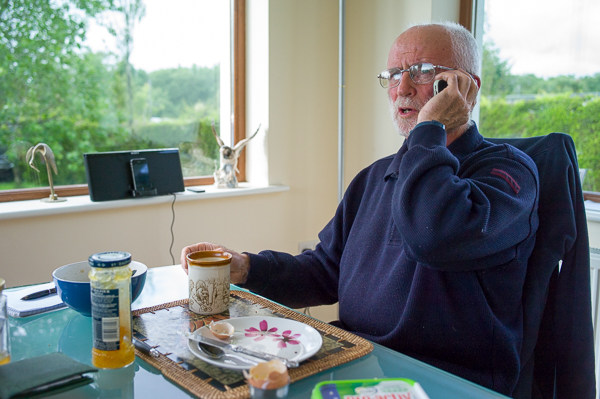
He lives alone so the telephone is a vital link to the family.

As is the internet.

He has to keep himself busy and occupied and spends his days cutting the grass and working around the caravan park he lives on.

It is autumn so at the moment an obsession of his is collecting fire wood.

Safety would not be his top priority and despite the rest of his family asking him repeatedly to wear proper safety equipment he never does.

But he is fit for a man of 70!

He never stops. (Here I have tried to show his vigour by using movement blur)

Not a bad days work!
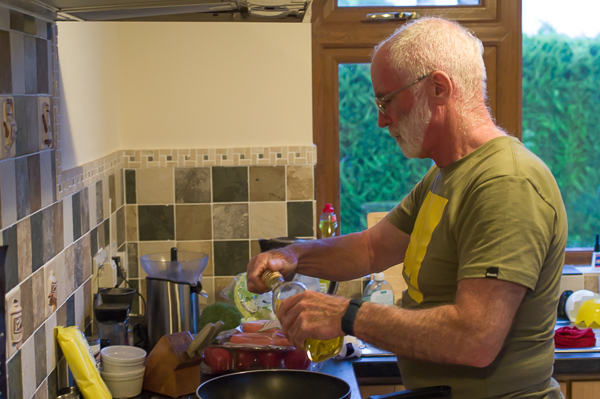
Dinner time.
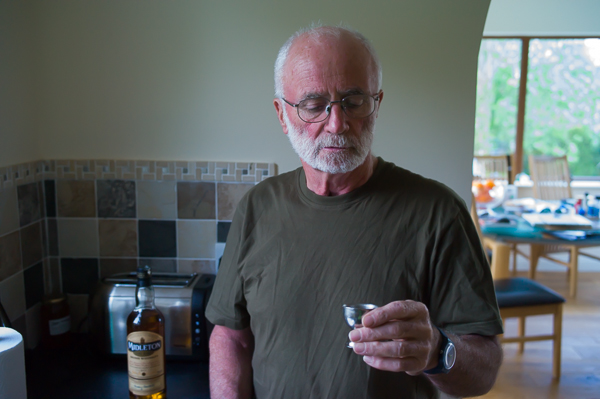
The day to day ritual is scared.

The End.
In conclusion: An assignment like a day in the life is an intimate piece. It needs lots of shots of the subject prominent in the frame. The viewer or reader needs to be shown clearly and unambiguously what or who the subject is.
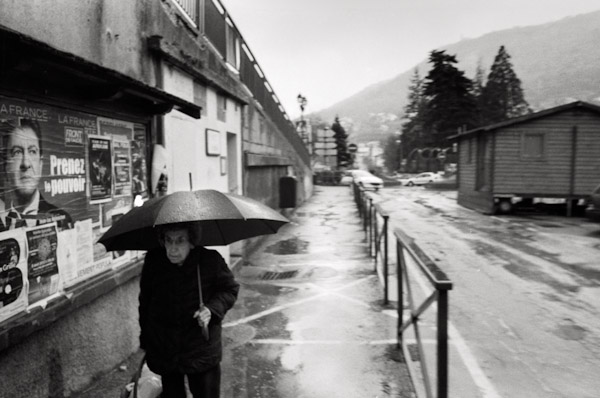
Good to see those two different aspects of your dad’s life. I reckon there’s probably lots more as well!